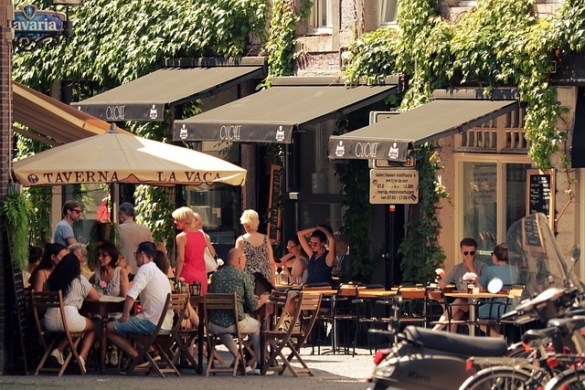
As any good real estate agent will tell you when trying to close a sale, there’s one key factor: location, location, location! This cliché is especially true for restaurant ventures.
Despite a robust menu, stellar customer service, or effective marketing, choosing the wrong spot can lead to financial struggles and eventual closure. Here’s a detailed look at why location matters and how to navigate this important decision using tools like Maptive.
Table of Contents
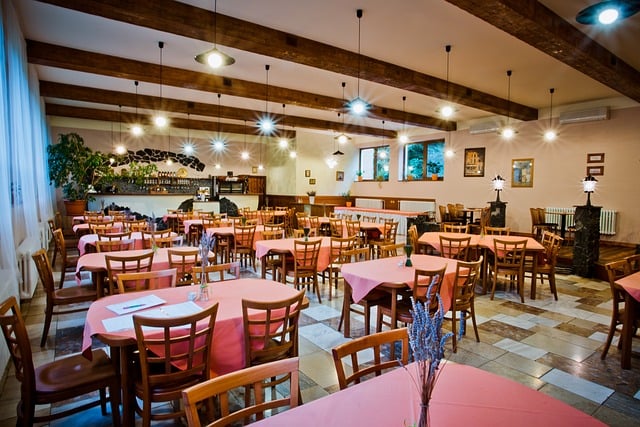
According to the National Restaurant Association, the food service industry is forecast to reach $1 trillion in sales in 2024, with 45% of operators expecting the competition to be more intense than last year.
To start a new venture and survive, choosing the right location for your restaurant is crucial, whether you cater to locals or commuters. Studies show that 85% of a restaurant’s customers reside within just 3 to 5 miles of its location, highlighting the significance of aligning with your target demographic.
For commuters, accessibility and opportunity are key factors influencing dining choices. Quick-service restaurants often thrive along major roads and highways, benefiting from passing traffic rather than local residents.
Your restaurant’s location not only shapes its identity but also determines its product-market fit. Urban areas with dense residential populations may attract bustling evening crowds, whereas commercial hubs may see peak business during breakfast and lunch hours, driven by nearby office workers.
In cities like New York and San Francisco, the restaurant scene can vary dramatically. New York City is the most Michelin-starred city in the US, while San Francisco is the most saturated restaurant market with 39.3 restaurants per 10,000 households–a very high-risk, high-reward situation: fierce competition on one side and lucrative foot traffic on the other.
Any way you slice it, the reality is that 55% of diners choose their eating destination primarily because of its location. This means that more than half of potential customers could be drawn to your restaurant simply because it’s convenient and easily accessible.
Successful restaurants often share commonalities in their location strategies, while failed ventures highlight critical missteps.
There are numerous reasons why restaurants fail, ranging from common pitfalls such as high rent relative to revenue and overexpansion (leading to competition with nearby branches) to location-specific missteps like poor accessibility and visibility, selecting sites in declining commercial areas, and insufficient analysis of foot traffic and customer convenience.
Hooters‘ skimpy-outfit strategy thrived in sports-centric areas, but Manhattan’s high rent demanded a constant flow of customers. With low foot traffic, the location couldn’t keep up, proving even a popular concept can’t overcome a bad fit.
Lesson: Know your target audience and choose a location with the right demographics and foot traffic.
Baja Fresh, the popular fast-casual Mexican chain, offered convenience, but their downtown L.A. location lacked it. Being far from the core business district and having limited parking meant potential customers simply couldn’t reach them easily.
Lesson: Convenience is key. Choose a location with easy access and parking to attract busy customers.
In a rush to grow, Applebee’s saturated strip malls and shopping centers. As foot traffic declined in these areas, so did sales. This rapid expansion into bad real estate doomed many locations.
Lesson: Plan strategically. Don’t prioritize the quantity of locations over quality. Analyze the potential for long-term growth before signing a lease.
Chipotle‘s fresh ingredients have always been a hit, but their Simi Valley location was a secret. Situated in a new shopping center with poor visibility, it couldn’t attract customers who couldn’t find it.
Lesson: Visibility is crucial. Choose a location with high foot traffic and ensure your restaurant is easy to spot.
Starbucks‘ rapid growth strategy backfired when they opened stores too close together or in areas lacking a customer base. This oversaturation cannibalized their own business.
Lesson: Market research matters. Analyze existing coffee shops and foot traffic before choosing a location.
These cautionary tales highlight the importance of location in the restaurant industry. Even strong food and concepts can’t overcome the burden of a bad fit. Before opening your doors, do your location research to avoid becoming another case study.
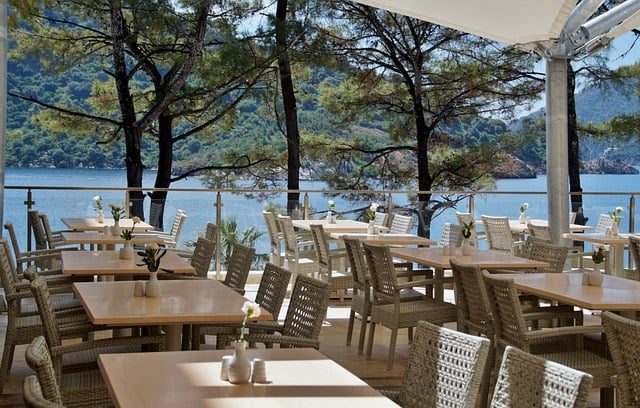
To effectively target your customers, start by identifying who they are and using tools like census data and demographic reports to locate areas with a high concentration of your ideal demographic. In doing so, you’ll determine the age, income, education level, and household size of residents, and use consumer spending data to assess dining habits and average meal expenditure. You can also identify the dominant ethnicities and languages spoken to ensure your menu and marketing resonate, and consider the daytime population from nearby offices to gauge potential for lunch business. Understanding local spending habits and dining preferences is also crucial for aligning your restaurant’s offerings.
Choose a location with high visibility from major roads and easy accessibility. Outside of cities where public transportation and taxis are readily available, parking becomes a crucial factor. Ideally, you’ll be able to provide customers with a dedicated lot and ensure the parking is well-lit, secure, and easy to access. In residential or high-transit areas, consider how easy it is for people to drive to or through your location—convenience always wins. Depending on your restaurant concept, you should choose a spot on a major road or intersection with high traffic, or evaluate pedestrian traffic from nearby residential areas, offices, and attractions.
New restaurants pop up all the time, and old restaurants go out of business just as often. Nevertheless, as you consider various spots, you should analyze nearby competitors in terms of cuisine, pricing, and customer base. Choose locations where competition is balanced or where complementary businesses can drive additional foot traffic.
Ensure your chosen location meets all zoning laws and health regulations by conducting thorough safety assessments and securing all necessary permits to avoid legal issues. You might also want to research crime statistics and police reports for the area to assess safety and confirm the location is zoned for commercial use so you are able to obtain all required permits and licenses. The next step is to determine the minimum square footage needed for your concept, including the kitchen, dining room, and any outdoor seating, and ensure the location you are considering has adequate electrical, plumbing, and HVAC capacity for a commercial kitchen. Evaluate the building’s condition and necessary renovations and obtain quotes from contractors.
To ensure your restaurateur dreams don’t meet an untimely end, you must take a cold, hard look at the numbers. Aim for total occupancy costs, including rent, utilities, internet, insurance, property taxes, and maintenance, to remain within 6-8% of projected sales. And then remember to shop around: obtain rental quotes from multiple commercial real estate brokers for comparable spaces and thoroughly account for all additional expenses to ensure your budget aligns with these financial targets.
Assess the potential for growth of the locations you are considering by analyzing economic and population growth projections for the area over the next 5-10 years. You may also want to look for opportunities to easily expand your restaurant’s offerings in the future, such as adding outdoor seating areas or moving into additional floors. Consider the feasibility of opening new locations within the same area to capitalize on future growth opportunities as well.
Maptive is a great tool to streamline location analysis for your new restaurant. Its user-friendly interface allows you to easily format your location data and import it into Maptive, using simple tools to customize map visuals and categorize potential locations based on key criteria.
Once your data is added, you can customize your maps to visualize demographics, traffic patterns, and competitor locations. You can also use tools like distance radius circles to assess catchment areas and overlap with competitors.
The platform also allows you to apply demographic overlays and traffic data to your maps, so you can easily refine location choices and then export or share findings to inform decision-making across stakeholders.
Using Maptive to analyze potential locations for your new restaurant is easy, just follow the steps below:
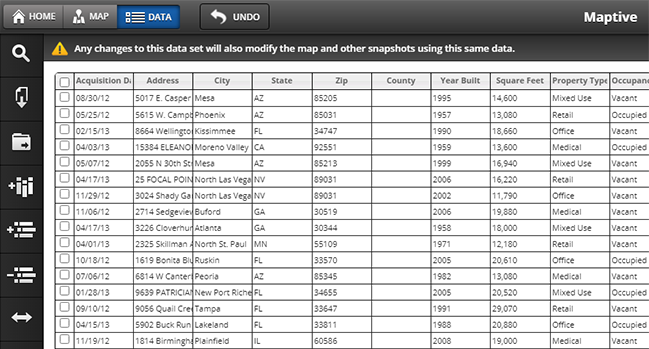
Organize your location data in Excel or Google Sheets, including columns for street address, city, state, postal codes, and optionally latitude and longitude. If you need guidance to format your data, you can refer to Maptive’s spreadsheet template.
To create a map, log in to your Maptive account and start a new map. Follow Maptive’s instructions to import your data into the map and make sure it matches the required format. If you have any questions, you can always reach out to their support team for assistance.
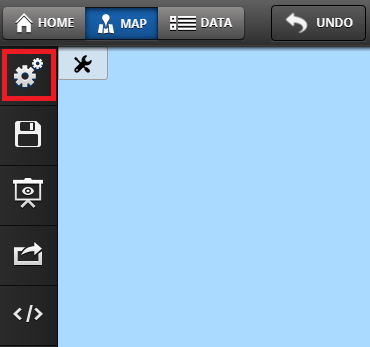
To customize your base map, open your map and click the gear wheel icon for ‘Map Settings.’ Here, you can adjust options to show or hide highways, roads, and points of interest. To further customize your map markers, go to ‘Map Settings’ and select ‘Map Markers / Graphics.’ This allows you to choose or create marker sets to distinguish between different location types, such as high potential and medium potential.
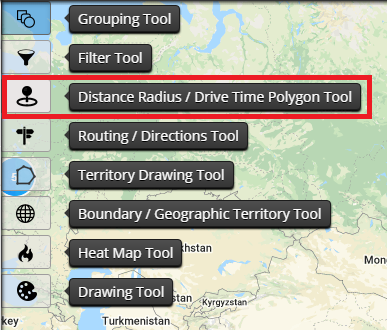
A radius map helps you visualize demographics, competition, foot traffic, and amenities to find the perfect spot for your new restaurant. To create one, open the Distance Radius / Drive Time Polygon Tool from ‘Map Tools.’ Click on an existing point on your map, select ‘Draw Radius,’ specify the radius distance (in miles or kilometers), and choose a color for the circle. You can add multiple radius circles to identify overlapping areas, which can help highlight regions of high competition or customer density.
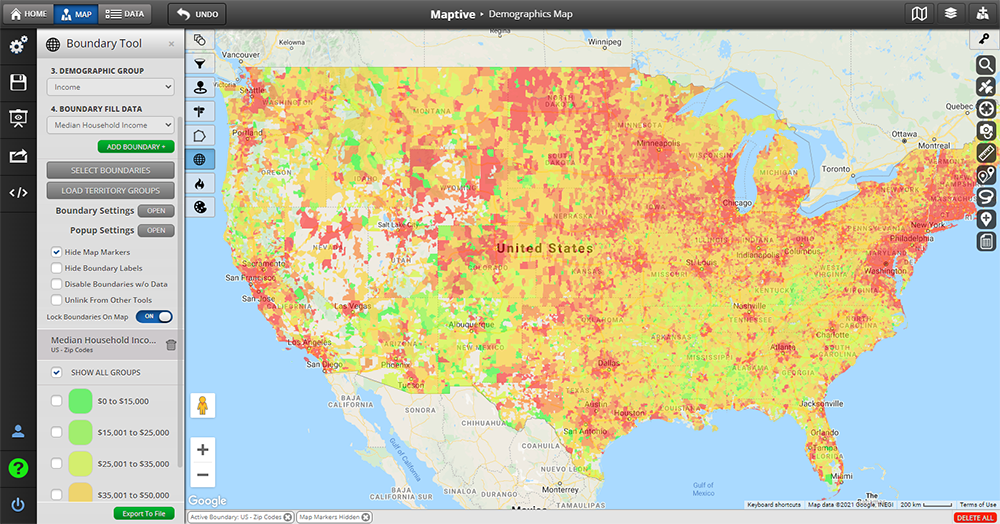
At this stage, you can add demographic and traffic data layers to your map to better assess population density, age distribution, income levels, and traffic patterns around potential locations. Note that the availability of this feature may depend on your Maptive plan.
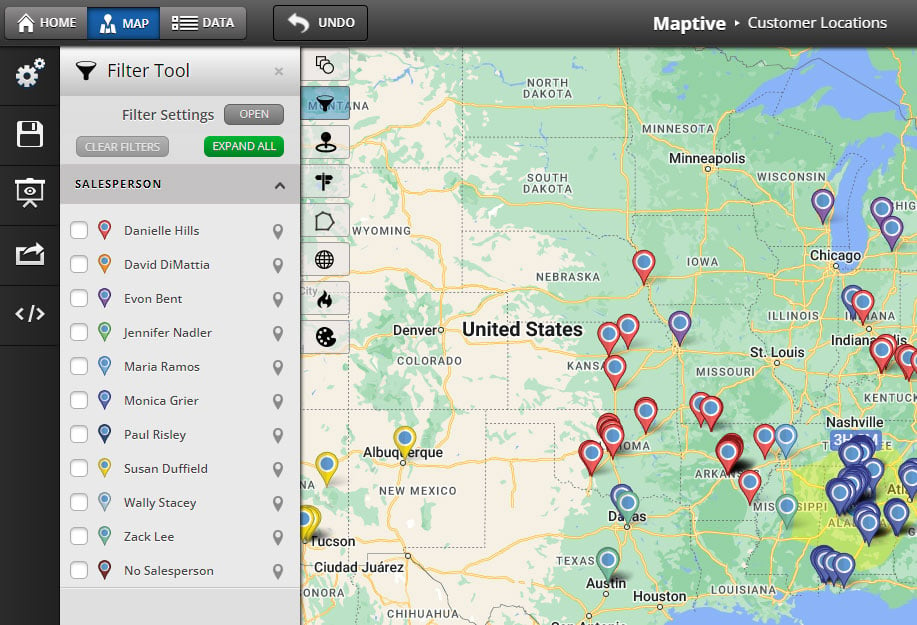
To categorize locations based on criteria like proximity to competitors or access to main roads, activate the grouping tool in ‘Map Settings.’ You can then use relevant filters, such as distance from main roads and areas with high foot traffic, to narrow down potential locations.
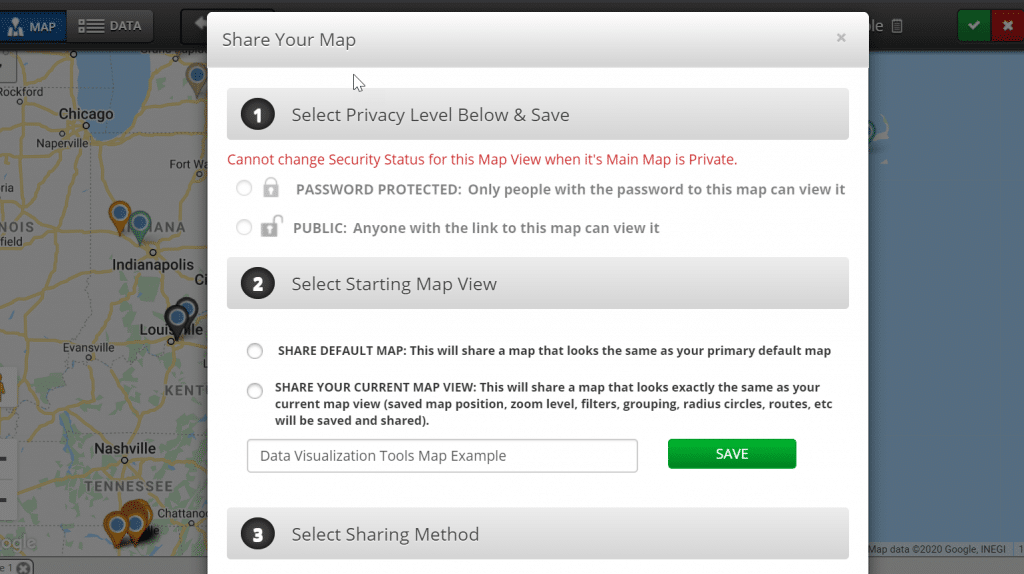
Once your map is complete, set your desired view and click ‘Export Map Image’ in the upper right corner. You can export the map as a .PNG or .PDF file in either Normal or Large size. If you’d rather share your map online, click the ‘Share’ icon in the left column to generate a shareable link–make sure to adjust the privacy settings before sharing.
A restaurant’s location is its foundation for success, impacting everything from foot traffic to profitability. Don’t gamble on chance–use Maptive to analyze demographics, competition, and regulations to find the perfect spot and watch your restaurant flourish.
